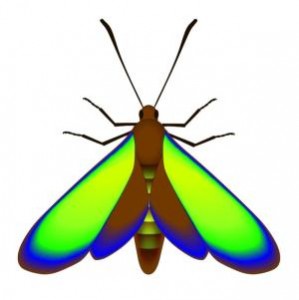Colour patterns studied by scientists through fossilized moths
Wednesday, November 16th, 2011 10:07:27 by Taimoor Tariq
Colour patterns studied by scientists through fossilized moths
Latest studies show that the brightest hues of colour are shown in patterns rather than pigments.
These ‘structural colours’ give peacocks their extravagantly coloured feathers, humans their blue eyes and opals their fire.
Animals more notably butterflies use these hues as means of communication. Moths exhibit the same attributes in order to attract mates by publicizing their toxicity. However, little is known about these colours despite their importance.
In the Nov.15 issue of PLoS Biology, Maria McNamara a palaeobiologist at the Yale University discusses these colours by reconstructing them in 47 million years old fossil moths.
Though the original colours of these moths were not preserved, scientists were able to recreate them due to the presence of the colour producing pigments which were still intact in the moth scales.
A stack of layers inside the scales is the reason behind moth’s toxic colours and produce iridescent colour that changes depending upon the angle they are viewed from.
"The moths basically wanted to appear the same colour from different angles — they didn’t want flashy iridescence" said McNamara.
The modern forester moths are able to produce cyanide which makes them not a very delicious appetizer for predators and scientists have now come to a conclusion that their ancestors also had the same trait.
These findings shed light on the evolution of tactics for predator avoidance and deterrence in forester moths. In addition, by showing that the original structural colors of fossil moths can be reconstructed, this works leads the way toward finding the origins
of the many ways butterfly and moth species use this type of color to communicate amongst each other as well as with predators. "Reconstructing the original colors of ancient animals gives us really good insights into their behaviour" said McNamara. "These
moth fossils hint that we can even do this for fossils that don’t have obvious color."
Short URL: https://www.newspakistan.pk/?p=3814

















